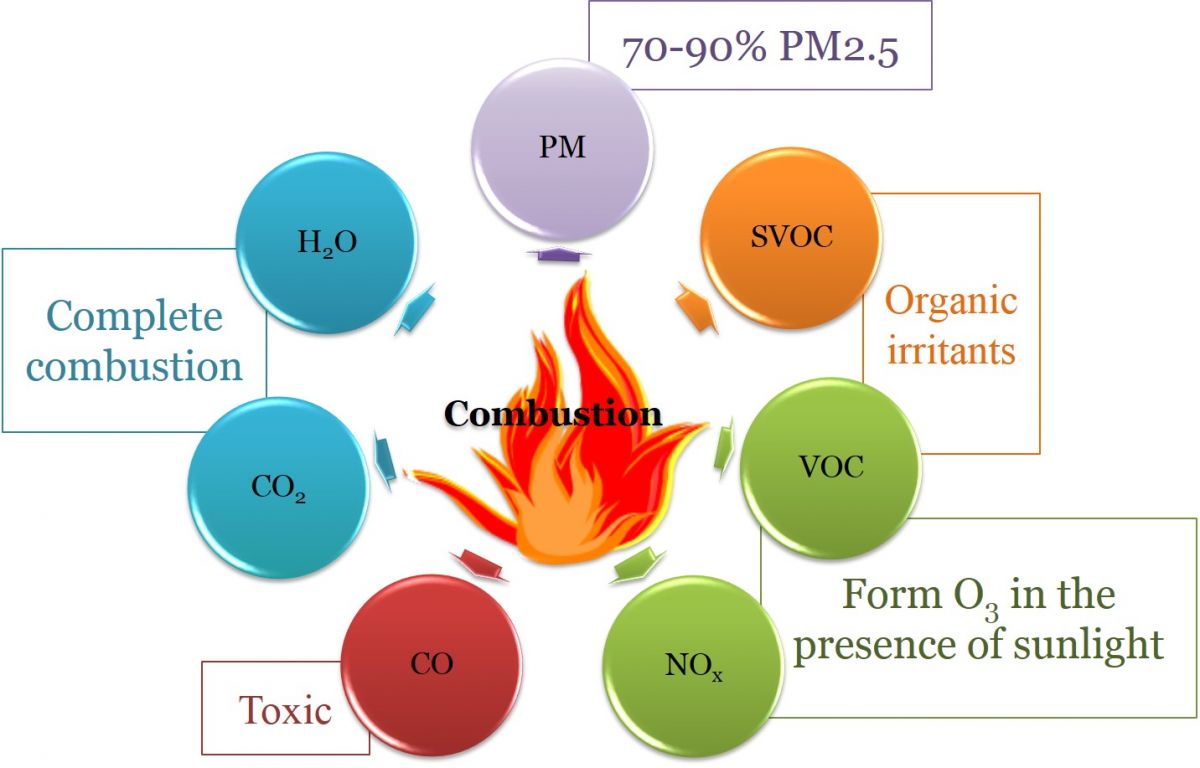The Harms of Smoking to Human and Social Life
Title: The Hazards of Smoking: Understanding the Impact of Cigarette Use
Introduction:
Smoking is a widespread public health concern with devastating consequences for individual health, societal well-being, and economic stability. This article delves into the multifaceted hazards of smoking, exploring its effects on physical health, mental well-being, social dynamics, and global economies.
Health Effects of Smoking:
Cigarette smoking is a leading cause of preventable death and disease worldwide. The inhalation of tobacco smoke exposes individuals to a toxic cocktail of chemicals, including nicotine, tar, carbon monoxide, and numerous carcinogens. These substances wreak havoc on the body, increasing the risk of developing a wide array of health conditions, including lung cancer, heart disease, stroke, respiratory infections, and chronic obstructive pulmonary disease (COPD). Moreover, smoking is implicated in exacerbating existing health conditions and diminishing overall life expectancy.
Secondhand Smoke Exposure:
The harmful effects of smoking extend beyond the individual smoker to those exposed to secondhand smoke. Secondhand smoke contains many of the same toxic compounds found in mainstream smoke and poses significant health risks to nonsmokers, particularly vulnerable populations such as children, pregnant women, and individuals with pre-existing health conditions. Passive smoke exposure is associated with an increased risk of respiratory infections, asthma exacerbations, cardiovascular disease, and even certain types of cancer.
Addiction and Dependency:
Nicotine, the primary psychoactive component in tobacco, is highly addictive, making smoking cessation a formidable challenge for many individuals. The addictive nature of nicotine perpetuates a cycle of dependence, wherein smokers experience cravings and withdrawal symptoms when attempting to quit or reduce their tobacco consumption. Over time, nicotine addiction can exert a profound influence on behavior, cognition, and decision-making, undermining efforts to quit smoking and maintain abstinence.
Social and Economic Impact:
In addition to its toll on individual health, smoking exacts a substantial social and economic toll on communities and societies at large. Smoking-related illnesses impose a heavy burden on healthcare systems, consuming significant resources and contributing to escalating healthcare costs. Moreover, productivity losses stemming from smoking-related morbidity and premature mortality further strain economies, impeding economic growth and development. The social costs of smoking are equally profound, encompassing diminished quality of life, social stigma, and interpersonal conflicts arising from smoking-related behaviors and attitudes.
Efforts to Reduce Smoking Rates:
Recognizing the urgent need to address the scourge of smoking, governments, public health organizations, and advocacy groups have implemented a range of strategies aimed at reducing tobacco use and its associated harms. These strategies encompass comprehensive tobacco control policies, including tobacco taxation, smoke-free legislation, advertising restrictions, public education campaigns, and smoking cessation interventions. While progress has been made in curbing smoking rates in many parts of the world, concerted efforts are needed to overcome entrenched tobacco industry interests and cultural norms that perpetuate smoking behavior.
Conclusion:
In conclusion, smoking remains a pervasive public health challenge with far-reaching consequences for individual health, societal well-being, and global prosperity. The hazards of smoking are well-documented, encompassing a spectrum of physical, mental, social, and economic harms. Addressing the complex interplay of factors driving smoking behavior requires a multifaceted approach that combines regulatory measures, public education, and support for smoking cessation efforts. By prioritizing tobacco control initiatives and fostering a culture of health and well-being, societies can strive towards a future free from the ravages of smoking-related illness and death.
Title: The Detrimental Effects of Smoking: A Comprehensive Examination
Introduction:
Smoking is a habit that has persisted for centuries, despite overwhelming evidence of its detrimental effects on health. This article aims to provide an in-depth analysis of the numerous hazards associated with smoking, ranging from its impact on physical health to its broader societal implications.
Health Risks of Smoking:
The health risks of smoking are well-documented and profound. Tobacco smoke contains thousands of chemicals, many of which are toxic and carcinogenic. Among the most significant health consequences of smoking is an increased risk of developing various types of cancer, including lung, throat, mouth, esophageal, and bladder cancer. Moreover, smoking is a leading cause of heart disease, stroke, respiratory illnesses such as chronic bronchitis and emphysema, and reproductive disorders. The cumulative toll of smoking-related diseases results in millions of premature deaths worldwide each year.
Secondhand Smoke Exposure:
In addition to posing risks to smokers themselves, tobacco smoke also endangers the health of nonsmokers who are exposed to secondhand smoke. Secondhand smoke contains many of the same harmful chemicals found in mainstream smoke and can cause respiratory problems, cardiovascular disease, and lung cancer in nonsmokers, particularly children and individuals with pre-existing health conditions. Protecting nonsmokers from involuntary exposure to secondhand smoke is a critical public health priority.
Addiction and Nicotine Dependency:
One of the primary reasons smokers find it challenging to quit is the addictive nature of nicotine, a potent psychoactive substance found in tobacco. Nicotine addiction alters brain chemistry, leading to cravings, withdrawal symptoms, and compulsive drug-seeking behavior. Over time, smokers become physically and psychologically dependent on nicotine, making it difficult to break free from the grip of addiction. Nicotine replacement therapies, counseling, and support programs are available to assist smokers in their journey towards quitting, but overcoming addiction requires commitment, perseverance, and often multiple attempts.
Impact on Mental Health:
Smoking not only affects physical health but also has implications for mental well-being. Research indicates that smokers are more likely to experience anxiety, depression, and stress compared to nonsmokers. While some individuals may turn to smoking as a coping mechanism for dealing with negative emotions, the temporary relief provided by nicotine is outweighed by the long-term detrimental effects on mental health. Smoking cessation can lead to improvements in mood and overall psychological well-being, highlighting the importance of addressing smoking as a holistic health issue.
Social and Economic Consequences:
The detrimental effects of smoking extend beyond individual health to encompass broader social and economic ramifications. Smoking-related illnesses impose a substantial burden on healthcare systems, consuming resources that could be allocated to other pressing healthcare needs. Moreover, productivity losses resulting from smoking-related morbidity and premature mortality impact economies at both the individual and societal levels. The financial costs of smoking, including expenditures on cigarettes and healthcare expenses, can exacerbate socioeconomic disparities and perpetuate cycles of poverty.
Conclusion:
In conclusion, the hazards of smoking are manifold and far-reaching, encompassing a spectrum of physical, mental, social, and economic consequences. Despite decades of public health efforts to combat smoking, it remains a persistent global health challenge. Addressing the root causes of smoking requires a multifaceted approach that combines regulatory measures, public education campaigns, smoking cessation interventions, and support for tobacco control policies. By prioritizing tobacco prevention and cessation efforts, societies can work towards reducing the burden of smoking-related disease and death, promoting healthier communities for generations to come.
Title: Combating Tobacco Use: Strategies and Initiatives to Reduce Smoking
Introduction:
Tobacco use continues to be a significant public health challenge, contributing to millions of preventable deaths worldwide each year. This article explores the various strategies and initiatives aimed at combatting tobacco use, ranging from policy interventions to community-based programs and public awareness campaigns.
Tobacco Control Policies:
One of the most effective approaches to reducing tobacco use is the implementation of comprehensive tobacco control policies. These policies typically include measures such as tobacco taxation, smoke-free laws, advertising bans, and graphic warning labels on cigarette packages. Tobacco taxation, in particular, has been shown to be a powerful tool for reducing smoking prevalence by increasing the price of tobacco products and discouraging consumption, especially among price-sensitive populations such as youth and low-income individuals. Smoke-free laws, which prohibit smoking in public places and workplaces, help protect nonsmokers from secondhand smoke exposure and create environments that support smoking cessation efforts.
Regulating Tobacco Marketing and Advertising:
Another critical component of tobacco control is regulating the marketing and advertising of tobacco products. Tobacco companies have a long history of targeting vulnerable populations, including youth and marginalized communities, through aggressive marketing tactics. By restricting tobacco advertising, sponsorship, and promotion, governments can limit the industry's ability to glamorize and promote tobacco use, thereby reducing smoking initiation and prevalence. Additionally, graphic warning labels on cigarette packages serve as a powerful deterrent by highlighting the health risks associated with smoking and encouraging smokers to quit.
Smoking Cessation Interventions:
Encouraging and supporting smokers to quit is an essential aspect of tobacco control efforts. Smoking cessation interventions encompass a range of strategies, including counseling, behavioral therapy, pharmacotherapy, and quitlines. Counseling and behavioral interventions help smokers identify triggers and develop coping strategies to overcome cravings and withdrawal symptoms. Pharmacotherapies such as nicotine replacement therapy (NRT), bupropion, and varenicline can aid in managing nicotine withdrawal and increasing quit rates. Quitlines provide free telephone counseling and support services to individuals seeking to quit smoking, offering personalized assistance and resources to help them succeed in their quit attempts.
Community-Based Programs:
Community-based programs play a vital role in addressing tobacco use at the local level. These programs engage community members, healthcare providers, schools, workplaces, and other stakeholders in collaborative efforts to prevent tobacco use, promote smoke-free environments, and support smoking cessation. Community-based interventions may include educational campaigns, tobacco-free policies in schools and workplaces, youth prevention programs, and cessation support services tailored to the needs of specific populations. By mobilizing community resources and fostering social support networks, these programs empower individuals and communities to take collective action against tobacco use.
Public Awareness Campaigns:
Public awareness campaigns are instrumental in raising awareness about the health risks of tobacco use and promoting behavior change. These campaigns utilize mass media, social media, and other communication channels to disseminate evidence-based messages about the dangers of smoking, the benefits of quitting, and available cessation resources. Effective campaigns employ compelling narratives, testimonials, and graphic imagery to resonate with diverse audiences and provoke emotional responses. By increasing knowledge, changing attitudes, and influencing social norms surrounding tobacco use, public awareness campaigns contribute to reducing smoking prevalence and fostering healthier lifestyles.
Conclusion:
In conclusion, combatting tobacco use requires a comprehensive and multi-faceted approach that addresses the complex factors driving smoking behavior. From implementing tobacco control policies and regulating marketing practices to promoting smoking cessation interventions and community-based programs, a range of strategies and initiatives can contribute to reducing smoking prevalence and mitigating the harms of tobacco use. By prioritizing evidence-based interventions, fostering collaboration among stakeholders, and empowering individuals and communities, we can work towards creating tobacco-free environments and improving public health outcomes for all.























































